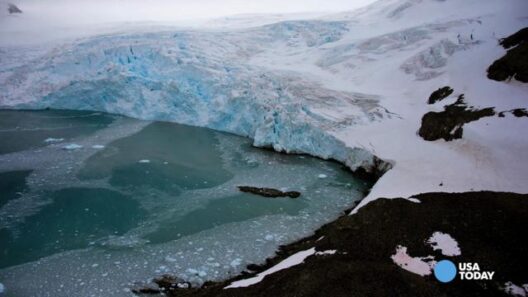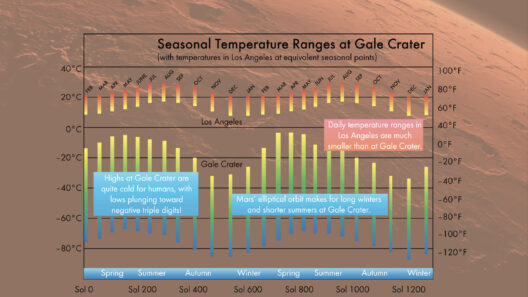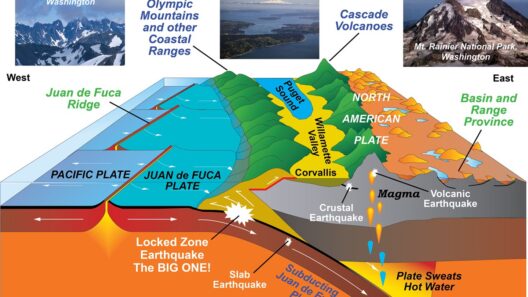The climate of Uranus is a subject of fascination among astronomers and planetary scientists alike. As the third-largest planet in our solar system and classified as an ice giant, Uranus exhibits many unique climatic features that differentiate it dramatically from its terrestrial counterparts and even from other gas giants like Jupiter and Saturn. This icy planet’s atmosphere not only showcases remarkable complexities but also serves as a vivid reminder of the diversity within our solar system.
Uranus is primarily composed of hydrogen, helium, and a variety of ices such as water, ammonia, and methane. These ices are significant contributors to the planet’s atmospheric dynamics and characteristics. The presence of methane, in particular, provides a distinctive teal hue to Uranus. This striking color captures the imagination and compels further investigation into the intricate processes at work within the planet’s atmosphere.
The atmospheric structure of Uranus consists of several layers, with the uppermost being characterized by intriguing cloud formations. The cloud tops are predominantly composed of ammonia ice clouds, juxtaposed with other icy clouds formed by various compounds. These clouds not only exhibit vivid shades of blue and green but also serve as markers of the planet’s climatic patterns. Below the visible cloud layers, Uranus has a deeper atmosphere made up of gas and icy materials, with increasing pressure and temperature correlating with the depth.
Another fascinating aspect of Uranus’ climate is the extreme wind patterns that prevail within its atmosphere. Wind speeds on Uranus can reach staggering velocities, often exceeding 560 miles per hour (900 kilometers per hour). These high-speed winds contribute to complicated weather systems. Unlike Earth, where weather patterns are largely influenced by the sun, Uranus experiences unusual atmospheric behaviors, attributed to its peculiar axial tilt of approximately 98 degrees. This extreme tilt results in extreme seasonal changes, leading to unpredictable weather phenomena across different latitudes.
Seasons on Uranus are markedly different from those on Earth, impacting the climate in a unique way. Each season lasts approximately 21 Earth years due to the planet’s extensive orbital period of 84 years. This lengthy season cycle means that regions near the poles can enter prolonged periods of darkness and light, accompanied by radically shifting weather patterns. The implications of this are profound, as the polar regions may experience intense storms or prolonged calm periods, reflecting the intricacies of Uranus’ atmospheric dynamics.
Scientists also find Uranus intriguing due to its internal heat dynamics. Despite being the coldest of the gas giants, Uranus emits less heat than it receives from the sun. This enigmatic energy imbalance leads researchers to postulate about the planet’s formation and internal structure. The lower-than-expected thermal output suggests the possibility of complex geological processes occurring beneath the icy exterior. It raises questions about the thermal evolution of ice giants and how their atmospheres are affected by such internal dynamics.
The discovery of dark storm systems high in Uranus’ atmosphere adds yet another layer of complexity to the climatic profile of this ice giant. Observations showed massive, dark spots that are indicative of violent storms, reminiscent of those found on Jupiter but distinctly different in terms of size and scale. The storms on Uranus tend to have a more ephemeral characteristic; they appear and dissipate much more quickly compared to their more famous counterparts in the volatile atmosphere of Jupiter. This transient nature highlights the dynamic and ever-evolving state of Uranus’ climate.
One must also consider the role of atmospheric chemistry in shaping the climate of Uranus. The interplay of various chemical compounds contributes to the unique thermal structures observed on different latitudes. For instance, compounds such as acetylene and ethane, which are present in trace amounts, can influence cloud formation and energy dynamics. Consequently, understanding these chemical processes is essential for deciphering the distinctive climate behavior of Uranus.
Additionally, the study of Uranus’ atmosphere offers insights into exoplanetary climates. As astronomers discover new worlds outside our solar system, understanding how gas giants like Uranus function provides valuable data for developing models of other planetary atmospheres. The complexity and variability observed in Uranus’ climate can be reflective of other celestial bodies, highlighting the broader implications of our investigations into this distant ice giant.
In conclusion, the climate of Uranus is a rich tapestry of phenomena characterized by extreme winds, seasonal variability, and intricate atmospheric compositions. The icy atmosphere, layered with clouds of ammonia and methane, contributes both to its striking appearance and to the understanding of atmospheric dynamics in a broader context. With ongoing research and advancements in space exploration technologies, the icy giant continues to reveal its secrets, inviting curiosity and encouraging deeper exploration into what makes these celestial bodies so fundamentally intriguing. The climate of Uranus serves as a vivid reminder of the diversity within our solar system and the countless mysteries still awaiting revelation.







